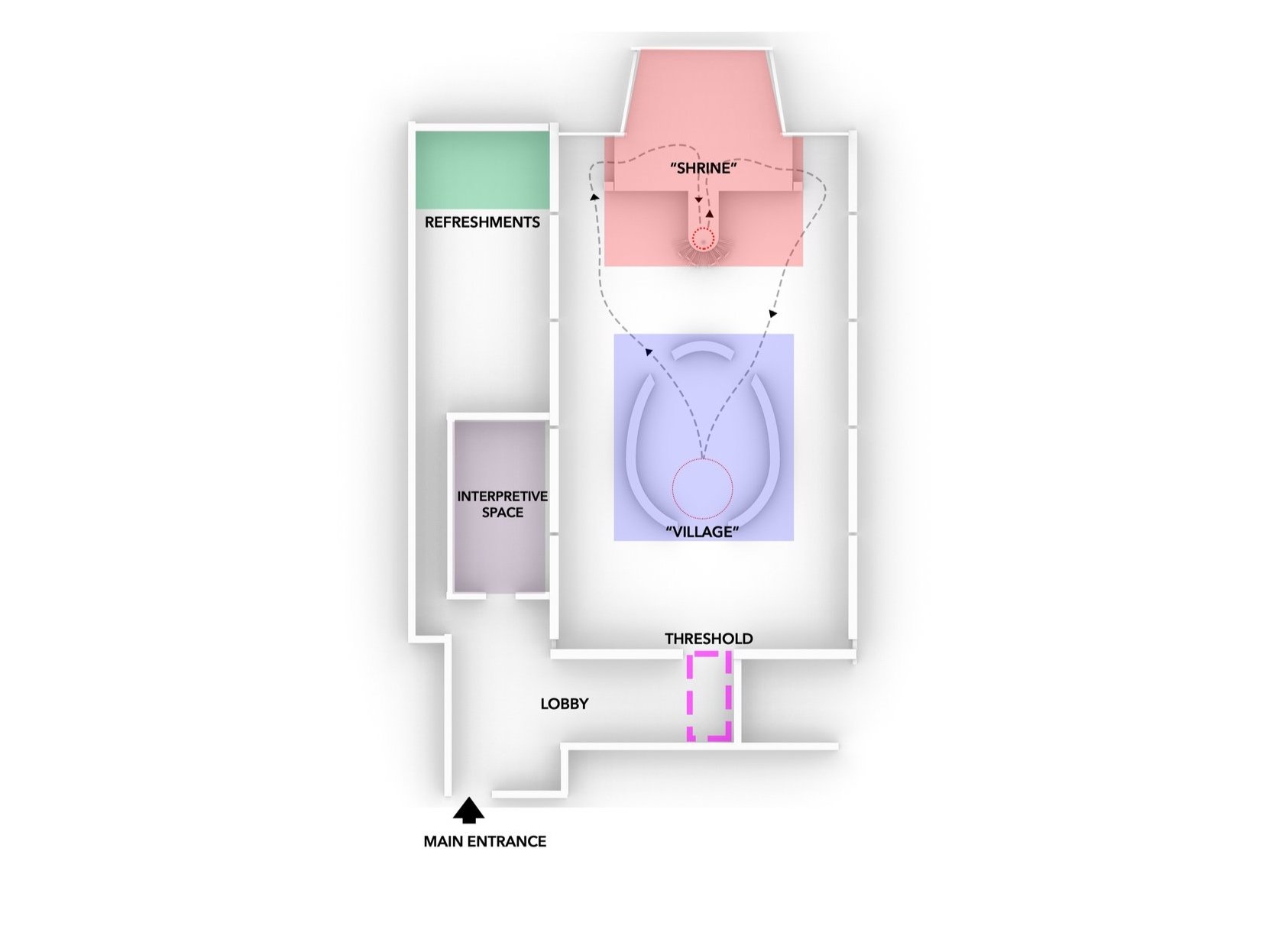
Over the past seven years, I have explored Indigenous African traditions, symbolism, and architecture to understand how their embodied ways of knowing and being can enrich contemporary life. In December 2024, I conceived and executed a creative experiment in the form of an immersive experience within the great hall and sanctuary of a former Buddhist temple, transforming the space into a site of spontaneous, unrehearsed ritual. Guided solely by music and instinct, I led 200 strangers through a communal ceremony inspired by Indigenous African wisdom—rooted in nature, art, and ritual—examining how these elements, when thoughtfully curated, can foster profound communal bonding. This project emerged from a deep-seated need to rekindle spirituality through hope, symbolism, and beauty in a society increasingly challenged by economic, social, and environmental upheaval. It was the culmination of seven years of research into both individual and collective healing.
The project is inspired by the book "The Healing Wisdom of Africa - Finding Life's Purpose through Nature, Ritual, and Community," written by the late Malidoma Somé Phd., a writer and workshop leader from Burkina Faso. Malidoma Somé was taken from his village in Dagara, BurkinaFaso as a child and trained to be a Jesuit priest. He fled from Europe in his early twenties and was reinitiated into his own Indigenous culture and spiritual beliefs. This dual experience informs Odudu's project, and is particularly relevant in a society like Canada.
Taking inspiration from the book which is in alignment with the core concerns of my research, there is a unique opportunity to engage people in the West with my interpretations of Indigenous African wisdom.
The curation of Ark has been meticulously designed to reinforce this conceptual framework. The chosen venue—a former Buddhist temple repurposed as an arts space—possesses strong architectural features and high ceilings that contribute to its spiritual resonance. Now a hub for cultural events such as theatre, dance, concerts, film festivals, and art exhibitions, the site provides an ideal setting for this transformative and participatory experience.
The creative experiment was supported by the Canada Council for the Arts, Hariri Pontarini Architects and others.
The exhibition space is delineated into two primary realms: the “Shrine” and the “Village.” At the heart of the experience stands the Shrine, a striking 13-foot-tall sculptural installation meticulously crafted according to instructions derived from Somé’s teachings and imbued with the artistic interpretation of Odudu, the project’s creator. This central structure, adorned with flora, serves as the focal point of the ceremony. Surrounding it are twenty-four sculptural clay vessels, each containing a symbolic “Seed” modeled after the unbloomed African daisy. These elements constitute the foundation of the audience-engaged ritual ceremony, which is further enriched by a live musical performance led by Sewa, a renowned Nigerian musician. Participants are invited to bring personally significant artifacts—such as photographs or small keepsakes—as offerings to the Shrine.
The ritual commences with a choreographed procession, marked by an evocative interplay of sound and symbolism. Guided by Odudu, participants carry their offerings from the symbolic Village toward the Shrine, where they select a Seed from one of the surrounding vessels. Upon reaching the Shrine, they sanctify their offering with a prayer before placing it within the vessel in exchange for the Seed. This act symbolizes the nurturing of new growth. The Seed is then anointed with water drawn from a traditional gourd within the Shrine, reinforcing the cyclical nature of life and renewal. Participants then return to the Village, where spoken blessings and affirmations are bestowed upon the Seed, transforming it into a symbolic Ark that embodies intention and aspiration. This sequence continues until all participants have completed the ritual, culminating in a powerful musical finale.
Following the ceremony, a communal gathering provided a space for participants to share honest reflections on their emotional experiences. Many were visibly moved, with some brought to tears. Many shared that as they watched the ritual unfold, witnessing participants offering their gifts, they felt a growing desire to contribute— to give a part of themselves to the experience and the community. One particularly poignant moment came from a woman who, in tears, shared that the experience had given her permission to trust and follow her instincts. This deeply personal exchange encapsulated the essence of Ark—an experiment in healing, reconnection to spirit, community, and the power of collective ritual.
This creative experiment was documented and will soon be shared as a film, offering deeper insight into the journey and discoveries of the project.
As part of my ongoing research into both individual and communal healing, I conducted a series of interviews with individuals from diverse backgrounds and life stages, exploring the three central themes of the immersive experience: Community, Faith, and Ceremony. Among the notable interviewees were Siamak Hariri, founding partner of Hariri Pontarini Architects, and Lisa Landrum, Head of the Department of Architectural Science at Toronto Metropolitan University. These videotaped interviews were displayed in a dedicated space preceding the sanctuary, offering contextual depth to the experience and serving as a key component of the marketing campaign
I, along with the key collaborators of the Ark project, led an intimate discussion about our creative journey behind this immersive experience, blending music, art, and architecture to explore the potential for community healing and connection.
The discussion was hosted by Hariri Pontarini Architects

















